
On this day in Tudor history, 1st August 1596, in the reign of Queen Elizabeth I, courtier John Ashley (Astley) died, probably at Maidstone in Kent. He was buried there at All Saints’ Church.
Here are some facts about Ashley
[Read More...]
On this day in Tudor history, 1st August 1596, in the reign of Queen Elizabeth I, courtier John Ashley (Astley) died, probably at Maidstone in Kent. He was buried there at All Saints’ Church.
Here are some facts about Ashley
[Read More...]
Fans of all things Tudor will be thrilled to know that a weekend conference dedicated to the late Dame Hilary Mantel’s Wolf Hall Trilogy will be held next summer
[Read More...]
On this day in Tudor history, 13th July 1527, John Dee, the astrologer, mathematician, alchemist, antiquary, spy, philosopher, geographer and adviser to Elizabeth I and influential statesmen, was born in London.
He had an incredible career
[Read More...]
On this day in Tudor history, 5th May 1586, in the reign of Queen Elizabeth I, fifty-six-year-old Sir Henry Sidney died. His body was buried in the Sidney Chapel at Penshurst and his heart in Ludlow, where he lived as President of the Council in the Marches of Wales.
[Read More...]
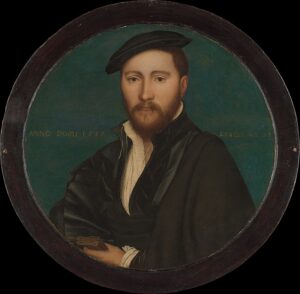 On this day in Tudor history, 30th March 1587, in the reign of Elizabeth I, Sir Ralph Sadler died. He was in his 80th year.
On this day in Tudor history, 30th March 1587, in the reign of Elizabeth I, Sir Ralph Sadler died. He was in his 80th year.
Sadler was a diplomat and administrator who worked as Thomas Cromwell's secretary before being noticed by Henry VIII.
At his death, he was one of the richest men in England.
Here are a few more facts about him…

On this day in Tudor history, 17th March 1570, in the reign of Queen Elizabeth I, William Herbert, 1st Earl of Pembroke, soldier, courtier and landowner, died at Hampton Court, aged sixty-three.
Here are some facts about this Tudor earl, who was known as Black Will Herbert and had a queen as a sister-in-law…
[Read More...]
On 15th March 1554, in the reign of Queen Mary I, John Hooper, Bishop of Gloucester and Worcester, was deprived of his bishopric while imprisoned in Fleet Prison. He had been charged with owing over five hundred pounds in unpaid first fruits, a charge he denied.
Let me tell you a bit more about this man, who ended up being a Marian martyr…
[Read More...]
On this day in Tudor history, 8 March 1569, evangelical reformer and Member of Parliament Richard Tracy died at his manor in Stanway, Gloucestershire.
Tracy was the cousin of Protestant martyr James Bainham and his works included the 1543 pamphlet on justification by faith: “Profe and Declaration of thys Proposition: Fayth only iustifieth”, which was dedicated to Henry VIII; the 1544 “‘A Supplycation to our most Soueraigne Lorde, Kynge Henry the Eyght” and “A Bryef and short Declaracyon made wherebye euery Chrysten Man may knowe what is a Sacrament”. In Elizabeth I’s reign, he served as a Commissioner of the Peace and Sheriff in Gloucestershire.
[Read More...]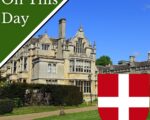
On this day in Tudor history, 1st March 1559, in the reign of Queen Elizabeth I, Catholic politician and landowner, Sir Thomas Tresham, died at Rushton in Northamptonshire. He was buried at St Peter’s Church, Rushton.
Tresham was a leading politician in the reigns of Henry VIII and Mary I, and he’s an interesting Tudor chap.
Let me tell you a bit more about him…
[Read More...]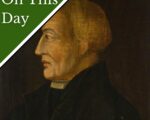
During the night of 28th February/1st March 1551, theologian and Protestant reformer Martin Bucer died in Cambridge. He was fifty-nine years old.
Let me tell tell you a bit more about this reformer, who ended up being posthumously burned as a heretic in Mary I’s reign!
[Read More...]
On this day in Tudor history, 14th February 1492, in the reign of King Henry VII, magnate William Berkeley, Marquis of Berkeley, died. He was buried in the Augustinian friary in London with his second wife, Joan.
Berkeley is known for his involvement in the 1470 Battle of Nibley Green, the last English battle fought between private armies of feudal magnates.
[Read More...]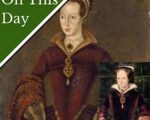
This day in Tudor history, 9th February 1554, in the reign of Queen Mary I, was one of the dates set for the execution of Lady Jane Grey, the former Queen Jane, but she was granted a three-day reprieve.
Why and what had happened between her trial in November 1553, when she had been condemned to death, and this day?
Let me tell you…
[Read More...]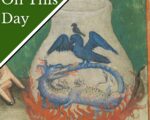
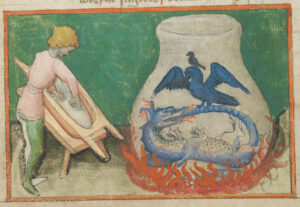 On this day in Tudor history, 1st February 1552, in the reign of King Edward VI, alchemist Roger Cooke was born.
On this day in Tudor history, 1st February 1552, in the reign of King Edward VI, alchemist Roger Cooke was born.
Here are some facts about this Tudor alchemist who started his career in the household of Dr John Dee and also worked for Henry Percy, 9th Earl of Northumberland, and Sir Walter Ralegh...
An interesting man!
Image: Image from a 15th century alchemical treatise, Aurora consurgens

On this day in Tudor history, 16th January 1501, in the reign of King Henry VII, Sir Anthony Denny was born at Cheshunt in Hertfordshire. He was the second son of Sir Edmund Denny, Baron of the Exchequer to Henry VIII, and his wife, Mary Troutbeck.
The courtier and good friend of Henry VIII was educated at St Paul’s School, London, before moving on to St John’s College, Cambridge.
Following employment in the service of Sir Francis Bryan, a man known as the Vicar of Hell, Denny joined King Henry VIII’s privy chamber in 1533 and was made a yeoman of the wardrobe in 1536.
[Read More...]
On this day in Tudor history, 15th January 1555, in the reign of Queen Mary I, Jane Dudley, Duchess of Northumberland and wife of John Dudley, Duke of Northumberland, died in Chelsea, London.
Forty-six-year-old Jane had outlived her husband, who was executed in 1553 after Mary I had successfully seized the throne from the couple’s daughter-in-law, Lady Jane Grey.
Here are some facts about this Duchess of Northumberland…
[Read More...]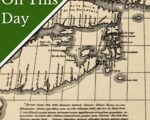
On this day in Tudor history, 9th January 1587, in the reign of Queen Elizabeth I, Clement Adams died. He was laid to rest at St. Alphege Church, Greenwich
The Warwickshire schoolmaster and map engraver was about sixty-eight at his death, having been born in around 1519.
[Read More...]
On 8th January 1570, in the reign of Queen Elizabeth I, Henry Clifford, 2nd Earl of Cumberland, died at his home, Brougham Castle. He was buried at Holy Trinity Church, Skipton.
According to a family story, Clifford was so devastated at the death of his first wife, Lady Eleanor Brandon, that he could only be brought back from a certain death by suckling from a woman’s breasts!
[Read More...]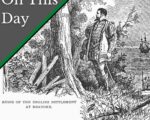
On this day in Tudor history, 24th October 1590, in the reign of Queen Elizabeth I, the governor of the Roanoke Colony, John White, returned to England after failing to find the lost Roanoke colonists.
The lost colonists included his daughter Ellinor (Elenora), his son-in-law Ananias Dare, and his granddaughter Virginia Dare.
What happened to the Roanoke colonists and what did the word CROATOAN carved onto a post mean?
Find out all about the lost Roanoke Colony and the theories regarding the disappearance of all 115 people, including the very latest research…
[Read More...]
On this day in Tudor history, 12th October 1555, in the reign of Mary I, Lewis Owen, member of Parliament and administrator in Wales, was assassinated.
Owen was murdered on Dugoed Mawddwy, a mountain pass, by a group of bandits as revenge for his campaign against them, which had led to around 80 hangings.
Find out more about Lewis Owen, his life and what happened…
[Read More...]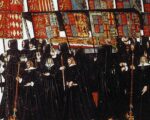
People all over the world have tuned in to watch the funeral of Queen Elizabeth II today, a queen who reigned for over 70 years and who was descended from Margaret Tudor, Queen of Scotland, and, therefore, King Henry VII, as well as having Boleyn blood.
The funeral procession and ceremony were full of tradition and ritual, and our Tudor ancestors would recognise much of it, so I thought I’d share with you some information on Tudor royal funerals.
[Read More...]
On this day in Tudor history, 4th August 1598, in the reign of Queen Elizabeth I, William Cecil, 1st Baron Burghley, died. He’d been Elizabeth’s chief advisor and a man she called her spirit.
Hear a few more William Cecil facts in this edition of #TudorHistoryShorts…
[Read More...]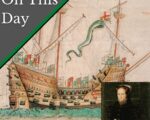
On this day in Tudor history, 19th July 1545, in the reign of King Henry VIII, the king’s flagship, the Mary Rose, sank right in front of his eyes.
She sank in the Battle of the Solent between the English and French fleets.
But why did the Mary Rose sink?
[Read More...]
On this day in Tudor history, 9th June 1511, in the reign of King Henry VIII, William Courtenay, 1st Earl of Devon, died.
Who was Courtenay and how did he go from being in favour to being a traitor and then back to being in favour?
[Read More...]
On this day in Tudor history, 2nd May 1568, Mary, Queen of Scots, who had recently been forced to abdicate in favour of her son, King James VI, successfully escaped from Lochleven Castle.
How did she end up a prisoner at Lochleven?
How did she escape?
And what happened next?
[Read More...]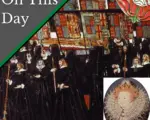
On this day in Tudor history, 28th April 1603, Queen Elizabeth I, the last Tudor monarch, was laid to rest at Westminster Abbey in a lavish funeral.
Find out more about her funeral…
[Read More...]
On this day in Tudor history, 13th April 1557, John Brydges, 1st Baron Chandos of Sudeley, landowner, soldier and Lieutenant of the Tower of London, died at his home, Sudeley Castle in the Cotswolds.
Brydges served Henry VIII, King Edward VI and Mary I loyally, and even managed to keep royal favour with Mary I after being accused of being too lenient with prisoners Lady Jane Grey and Princess Elizabeth (future Elizabeth I).
Let me tell you more about Brydges and his time in charge of Lady Jane Grey and Elizabeth I.

On this day in Tudor history, 21st March 1603, a dying Queen Elizabeth I finally took to her bed.
Elizabeth I had been queen since November 1558, but now she was dying. She had deep-rooted melancholy, couldn’t sleep and was refusing to eat. She spent her days lying on cushions in her withdrawing chamber. But on 21st March, she was finally persuaded to go to bed.
Find out more about these last days in this talk…
[Read More...]
On this day in Tudor history, 5th March 1558, Spanish physician Francisco Fernandes brought back live tobacco plants and seeds from Mexico to Europe.
I talk about the introduction of tobacco in Europe and how it was viewed as a cure-all, and how tobacco smoking became fashionable at Elizabeth I’s court.
[Read More...]